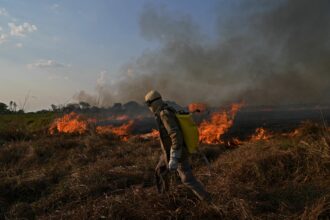The Society of Environmental Journalists announced last week that Anne Marshall-Chalmers, a freelancer for Inside Climate News and former ICN reporting fellow, won first place for feature writing in its 22nd annual awards for Reporting on the Environment for her story on the convergence of California’s wildfire and affordable housing crises.
Marshall-Chalmers, who is based in the Bay Area, made regular trips to the scene of the Cache fire in Clearlake, California to develop relationships with her main subjects, Susan Gilbert and Lorraine Capolungo, who both lost their mobile homes in the blaze. Interviews with government officials, first responders and researchers rounded out her reporting. Her months of interviewing, collecting documents and visiting the scene of the fire culminated in the Inside Climate News story, Mobile Homes, the Last Affordable Housing Option for Many California Residents, Are Going Up in Smoke.

“Anne Marshall-Chalmers investigates a much-overlooked aspect of the human and housing cost of wildfires in California,” the judges wrote. “Her engrossing and beautifully crafted lede engages the reader from the very first line and sets the tone for a narrative that interweaves the personal and universal, as well as thoroughly researched facts about wildfires near mobile home communities.”
In her story, Marshall-Chalmers wrote “mobile homes lay bare a warming planet’s collision with a shortage of affordable housing. Though perceived as a shelter of last resort, mobile homes house 22 million people, and mobile home parks provide three times the number of affordable housing units than the nation’s public housing. Most mobile home residents are low or very low income. Households are disproportionately non-white, seniors and families with small children. Typically, residents of mobile home parks rent the land they live on, leaving them with no claim to growing property value and no right to return should disaster strike.”
But it was her detailed description of the struggles of her subjects before, during and after the fire that the judges found made the story stand out.
“The narrative voice and choices keep the reader captivated until the end and have us all asking questions that we may not have asked before,” the SEJ judges wrote.











